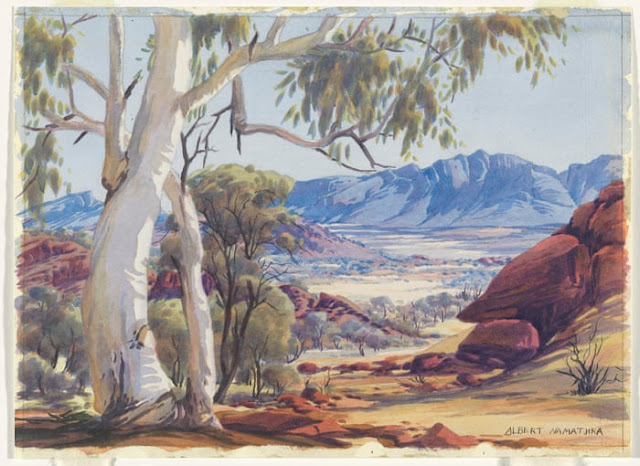_______________
In a discussion with a colleague last week about the work of Vincent Van Gogh, attention was directed to Van Gogh’s works Starry Night Over Rhone River and The Café Terrace, prints of both works hanging on the wall behind me in my office, where our discussion took place.
That in turn touched off further discussion as to Van Gogh’s depictions of the real locations and as to how artists portray real life locations.
It occurred to me that it would be interesting to have a look at such comparisons.
Following is the beginning of a regular series on art works and their real life locations and subjects, in some cases the exact scenes and, in others, the nearby locales.
________________
Albert Namatjira:
Albert Namatjira (1902 – 1959) was an Aboriginal artist from the MacDonnell Ranges in Central Australia. As a pioneer of contemporary Indigenous Australian art, he was the most famous Indigenous Australian of his generation. Namatjira's richly detailed, Western art-influenced watercolours of the outback, notably the MacDonnell Ranges, departed significantly from the abstract designs and symbols of traditional Aboriginal art.
In 1957 Namatjira was the first Aboriginal person to be granted restricted Australian citizenship, giving him the right to vote and have limited land rights. As a citizen Namtjira could now also buy alcohol. In keeping with Aboriginal custom, Albert’s friends expected him to share any alcohol he bought. But in doing this he broke white man’s laws. In 1958, police charged him with supplying alcohol to Aboriginal people. He denied the charge, but the court didn’t believe him. After two months in prison, he emerged a free, but broken man. He had lost his will to paint, and to live. Albert Namatjira died in 1959 aged 57.
Art:
Reality:
By the way:
In 1956 William Dargie's portrait of Albert Namatjira became the first of an Aboriginal person to win the Archibald Prize:












No comments:
Post a Comment
Note: Only a member of this blog may post a comment.